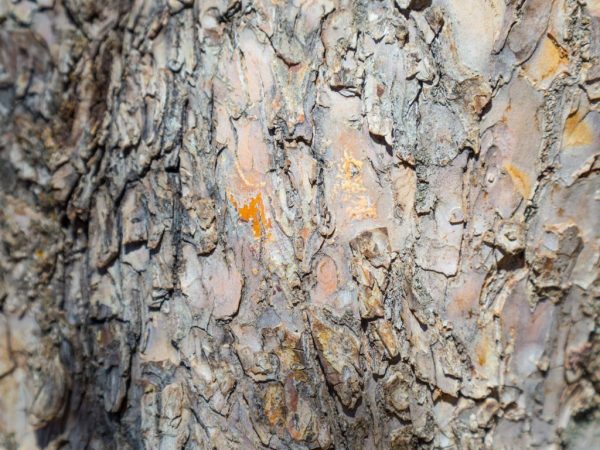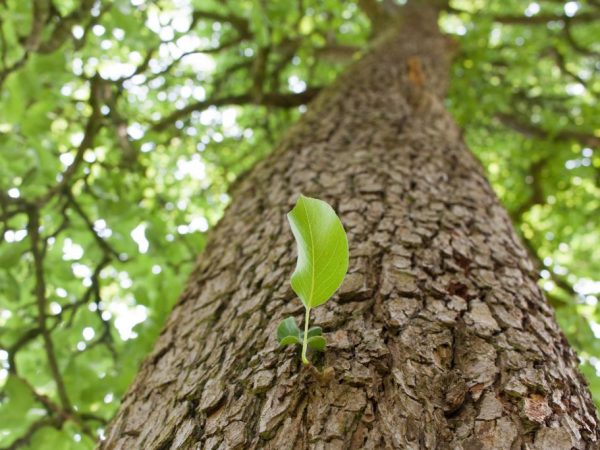The bark of the pear is cracked
When growing pears, many gardeners are faced with the fact that the bark exfoliates from the tree, characteristic grooves appear, leading to a weakening of the culture. When the bark of a pear has cracked, action must be taken immediately. Let's take a look at how to prevent problems and heal the trunk.

The bark of the pear is cracked
Why does cracking occur?
Frost
A cold winter without precipitation with sudden temperature changes can provoke peeling of the pear bark.
Sunburn
The bark begins to crack due to sunburn during the winter. This happens on cold winter days with calm weather, when the tree is not protected from the scorching rays of the sun falling on the bark.
In this weather, branches with bark quickly warm up. After sunset, when a sharp cold snap sets in, burns appear on the landings. Gradually, the trunk on the pear cracks, the shoots dry up, and the gardener will need to devote enough time to planting with further cutting.
Fungi and insect pests
Fungi and harmful insects can cause wood cracking. Over time, many black dots form on the damaged tree, after which the bark begins to flake off and then burst.
Often the bark exfoliates if it is affected by the bark beetle. These insects love to feast on fruit wood, partially or completely destroying the top layer of the trunk.
Detachment is often caused by low temperatures and fungal diseases.
Black cancer damages many crops, including apple and pear. It appears on foliage, flowers, fruits. The disease is especially dangerous in case of damage to the trunk, skeletal branches. In places where the disease appears, spots of brown and purple color appear, the bark begins to turn black and eventually falls off, exposing the wood. Such plantings die in 2-3 years.
Incorrect cropping
Rarely, cracking occurs in plantings due to improper pruning of branches, leading to weakening of pears and loss of bark.
Anti-cracking measures

If cracks are found, the bark should be treated immediately.
If cracks appear on the trunk, you need to treat the damaged areas with garden pitch. It is also recommended to immediately feed the tree with the necessary minerals for quick regeneration of the bark. Only in this way the disease will not affect the growth of the tree, its further fruiting.
Preventing frostbite
If the bark on the pear cracks in winter, it is recommended to insulate the planting in winter, using the lower fluffy branches of the spruce, a thick layer of roofing material. You need to be especially careful about young seedlings.
Fungus and burns
To prevent trunk disease from disease with various pathogenic fungi, insects, preventive treatment of the bark should be carried out in the spring with various effective ready-made chemicals or vitriol.At the same time, you can treat an already cracked trunk with insecticides, which allow you to destroy harmful insects.
To prevent the appearance of sunburn on the trunk of pears, every year in the fall, you need to whitewash the trunk and main branches with a lime solution. If you do run into a problem, remove the diseased bark and treat the wound with hydrogen peroxide. After that, grease the cracks with oil-based paint, natural oil, clay preparations.
Insect control
To protect the garden from bark beetles and other harmful beetles, it is recommended to spray pears after flowering with one of the following means:
- Clipper;
- Confidor;
- Bifenthrin;
- Bi-58;
- Empire-20;
- Krona-Antip;
- Calypso and others.
You need to spray immediately after the snow has melted, before the first leaves appear, the tree blooms.
How to fix cracks
After procedures aimed at treating the tree, it is necessary to disinfect the wound. For this, peeled wood is removed, the hollow is washed, processed with copper sulfate. Then you need to cover the crack with a mixture made from water, mullein, clay (cement). If the problem is not solved, the planting will begin to rot from the inside, and the growth of the pear will slow down. This procedure is best done in the fall, so that the holes are tightened by the spring.
Conclusion
Pear bark cracking is a serious problem that should never be ignored. Timely measures taken will help preserve the harvest and the tree itself.


